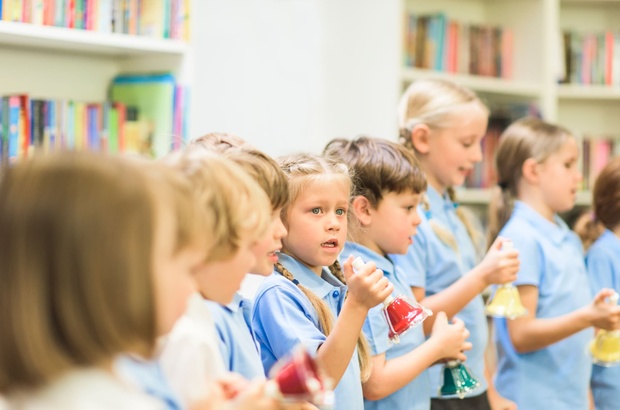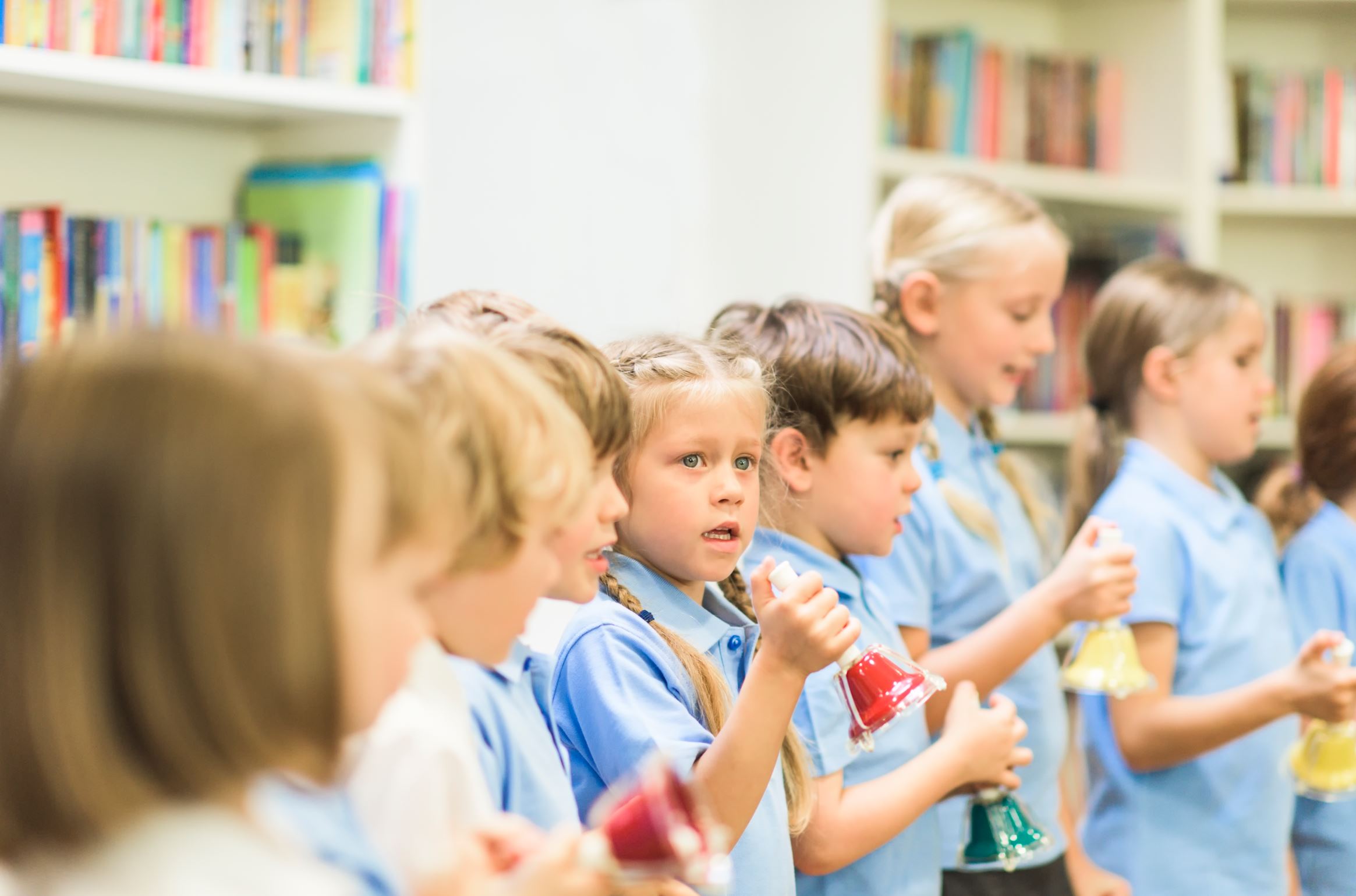Music-language connections signposted in neuroscience show that rhythm and grammar are linked.
A recently published doctoral study has demonstrated the potential for rhythm and music pedagogy processes to be used as a resource for grammar in the early years primary writing classroom.
Last year’s NAPLAN results showed that about a third of Australian students in Years 5, 7 and 9 were performing below proficiency in writing and grammar.
While a review of NAPLAN results between 2011 and 2022 found a persistent decline in Year 7 and Year 9 students’ achievement of persuasive writing skills.
Yet, recent studies from the field of brain science showing significant links between music and language – and particularly between rhythm and grammar – may help us to address these issues, and which have begun to be explored for their applications in the classroom.
Rhythm skills are the basis of learning to write
Over recent decades, there have been important advances in neuroscience and our understanding of the way a child’s brain develops.
It has become clear that the neural pathways for language and music are shared. But also that literacy capability can be enhanced by music.
Rhythm in music and language are both about temporal patterning. So a young child’s ability to tell two musical rhythms apart correlates with their ability to segment sounds when learning to read.
Indeed, experiments by cognitive psychologist Ani Patel found similar responses within the brain as it processes both tonal-harmonic and linguistic-grammatic information.
There is also emerging evidence that musical training in children sharpens how their brainstem encodes speech sounds.
Patel says that emotion is the fuel for rewiring the brain through music. I would go further: just as humans ‘feel’ a musical beat, feeling the rhythm of a text helps liberate children to connect emotionally to the written word.
Meanwhile, integrative brain scientist, Reyna Gordon, has found a genetic correlation between beat perception and language skills.
Gordon’s work has shown that using musical beat perception with young children has a direct impact on improving both their spoken and written syntax awareness.
Gordon and her colleagues from Vanderbilt University have conducted a number of studies to demonstrate the rhythm-grammar connection.
In one study led by Alexander Chern, children aged 5 to 8 years old who listened to rhythmically regular musical sequences were primed to make better grammatical judgments about correct and incorrect sentences.
And last year, Rachana Nitin led a study of 132 children aged 5-7 which uncovered a robust direct link between musical rhythm perception and grammatical task performance, including the ability to parse complex syntax such as sentences with multiple clauses.
Developing a rhythm-grammar model for teaching writing
My doctoral studies findings recently published with the University of Sydney focused on developing a framework to apply these findings about rhythm and grammar to the teaching of writing in the primary classroom.
The framework draws on musical and rhythmic processes featured in the Orff-Schulwerk and Kodály music pedagogies using five key principles: listening, interpreting, rehearsing, improvising, and composing (LIRIC).
These principles also express concepts shared across both the Australian Music and English curriculums.
The approach was first trialled and developed with Years 3, 4 and 6 students (8-12 year olds) and featured rhythm-based listening and speaking activities (ie aural-oral language activities) and short writing experiments, which saw children improvising on model texts by renown children’s authors.
A further study with Year 1 students (6-7 year olds) demonstrated several key findings including the critical place of rehearsing and improvising with language for improving writing outcomes.
Building an appreciation for both musical and prosodic rhythm through sound and gesture, was found to lift children’s linguistic creativity, sentence structure, punctuation, and artful use of literary features.
Significantly, the LIRIC framework was refined in practice by Year 1 classroom teachers in two key aspects.
Firstly, “rehearsal” was found to flow naturally into improvisation where helping children focus on a speech pattern, literary device, new vocabulary or sentence structure could be both playful and precise.
Rehearsal was something the students were motivated to do as a creative act, rather than as rote learning, using methods akin to drama rehearsal or through choral and other musical interactions with the text.
In this sense, rehearsal, unlike rote repetition, involved student agency, whereby students developed an idea or shaped a sentence with refined word choice or punctuation.
Movement was the other unexpected aspect that was added to the LIRIC framework by the teachers.
Gesture through hand signals – like conducting an orchestra – proved a successful way to visualise and emphasise the notational elements (or punctuation) that provides the rhythmic cues in the text.
From this, students demonstrated a significant lift in their flair for punctuation, which they used to give their writing a more expressive quality.
They used punctuation almost like script cues to an actor, indicating the way a line might be read. Movement was also added in the form of drama, which the teachers noted provided an uplift in the children’s attention to their vocabulary, as they refined their characters.
What are the implications for policymakers, school leaders and classroom teachers?
Studies with infants and very young children into the melodic complexity of crying, indicate that children develop rhythm and grammatical skills in parallel rather than sequentially as they grow up.
At the same time, grammar is often conceived as a difficult aspect to teach, especially with young children.
Policy settings and teaching approaches for the teaching and learning of grammar need to prioritise musical approaches to unlock the more complex aspects of language.
The place of rhythm through nursery rhymes and songs, when strategically used to support young children as they internalise the structures of language, is important groundwork for becoming a good writer.
The findings of my study also suggest there is often misunderstanding about the place of grammar in the early years English classroom.
While rhythm, song and poetry are featured in the curriculum, the links between rhythm and grammar are not widely understood.
Teaching strategies that show children the rhythm of the text as they listen to you read could support this. Helping students to improvise and experiment with the language in the text and talking about how the story makes them feel can link texts to rhythm and emotion.
Learning to write needs to involve some fun, and grammar should not be seen as a chore learnt by rote.
As in learning a musical instrument, developing as a writer is complex but it has its basis in both play and precision.
So, when I say the research identified the importance of 'play', this term holds the same connotation as it has in the music context, where playing music and improvising require technical skill and precision.
Playing with language through drama skits and oral-aural experiences are essential to a child’s development as a writer, where creative playfulness with rhythms, sound and music is used to support technical expertise.
References
Chern, A., Tillmann, B., Vaughan, C., & Gordon, R. L. New evidence of a rhythmic priming effect that enhances grammaticality judgments in children. J Exp Child Psychol (173), 371-379. doi: 10.1016/j.jecp.2018.04.007.
Fiveash, A., Bedoin, N., Gordon, R. L., Tillmann, B. Processing rhythm in speech and music: Shared mechanisms and implications for developmental speech and language disorders. Neuropsychology, 35(8):771-791. doi: 10.1037/neu0000766. Epub 2021 Aug 26. PMID: 34435803; PMCID: PMC8595576.
Halcrow, K. A. (2018). Imitation and innovation: Harnessing the principles of music pedagogy for the writing classroom. Literacy Learning: The Middle Years, 26(3), pp. 48+. Gale Academic OneFile, link.gale.com/apps/doc/A554040665/AONE?u=anon~f08d56be&sid=googleScholar&xid=91e675d5.
Halcrow, K. A. (2022). Harnessing the music-language link for writing. [video]. The University of Sydney. https://digital.library.sydney.edu.au/nodes/view/12246
Halcrow, K. A. (2024). The Music–Writing Connection: Exploring a Rhythm-Based Framework in the Primary Writing Classroom [thesis]. The University of Sydney.
Patel, A., & Morgan, E. (2016). Exploring Cognitive Relations Between Prediction in Language and Music. Cognitive Science: A Multidisciplinary Journal, 41(52).
Patel, A. D., Daniele, J. R. (2003). An empirical comparison of rhythm in language and music. Cognition, 87(1), B35-45. doi: 10.1016/s0010-0277(02)00187-7. PMID: 12499110.















